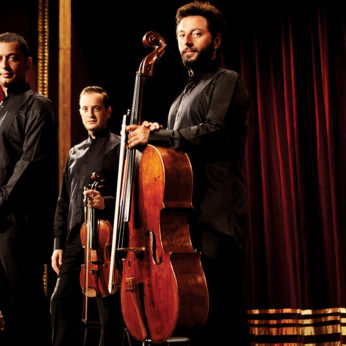Composer: Fazil Say (b. 1970)
Performance date: 05/07/2016
Venue: Bantry Library
Composition Year: 2010
Duration: 00:15:25
Recording Engineer: Richard McCullough, RTÉ lyric fm
Instrumentation: 2vn, va, vc
Instrumentation Category:String Quartet
Artists:
Borusan Quartet (Esen Kıvrak, Olgu Kızılay [violins], Efdal Altun [viola], Cağ Ercağ, [cello]) -
[quartet]

Fazil Say is one of the most high profile musicians of
modern day Turkey, not only as a result of his technical facility as a pianist,
but also for his natural tendency for outrageously emphatic expression. Say’s
String Quartet (titled Divorce) dives into the pain, anger and
uncertainty of a separation. On the subject of his string quartet, Fazil Say
comments, I have permitted myself to be led by my personality and
experiences and have attempted to relate experiences such as divorce,
separation and the failure of a relationship in the language of music with the
aid of notes and rhythms.
The Quartet begins, like an earthquake, with the rumbling
drama of unison rhythms. The anguish
propelling the music forward is interrupted by major jumps in register
paralleling the emotional instability of the
relationship in question. The eerie
harmonics of the second movement create a nebulous aura with an air of
uncertainty. The movement builds in volume but
never quite reaches a climactic resolution and fades away, leaving the
listener with a feeling of hopelessness for the situation.
Throughout the piece, the violins play back and forth in
melodic exchange and in the fourth movement this conversation evolves into the
final argument. The last movement, like
the first, begins in identical rhythms at a heightened pace. The sense of
urgency is overwhelming, until finally the second violin breaks apart from the
fray by repeating the same motive until the first violin enters with a
counter-motive. The breaking point has been reached and the separation
has finally sunk in, both in terms of texture and the narrative of the piece.
Copyright © 2024 West Cork Music. All rights reserved.
Designed and developed by Matrix Internet